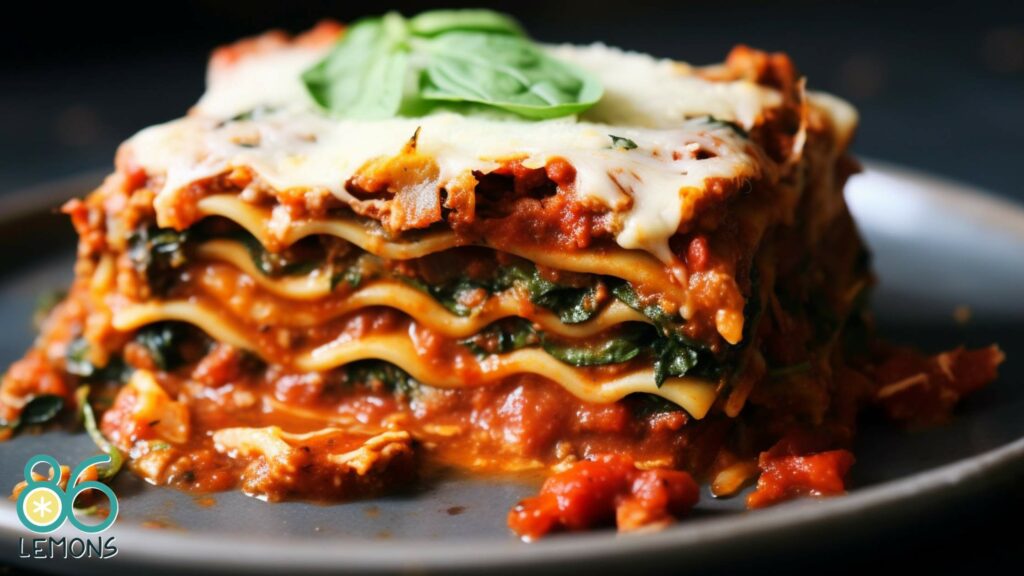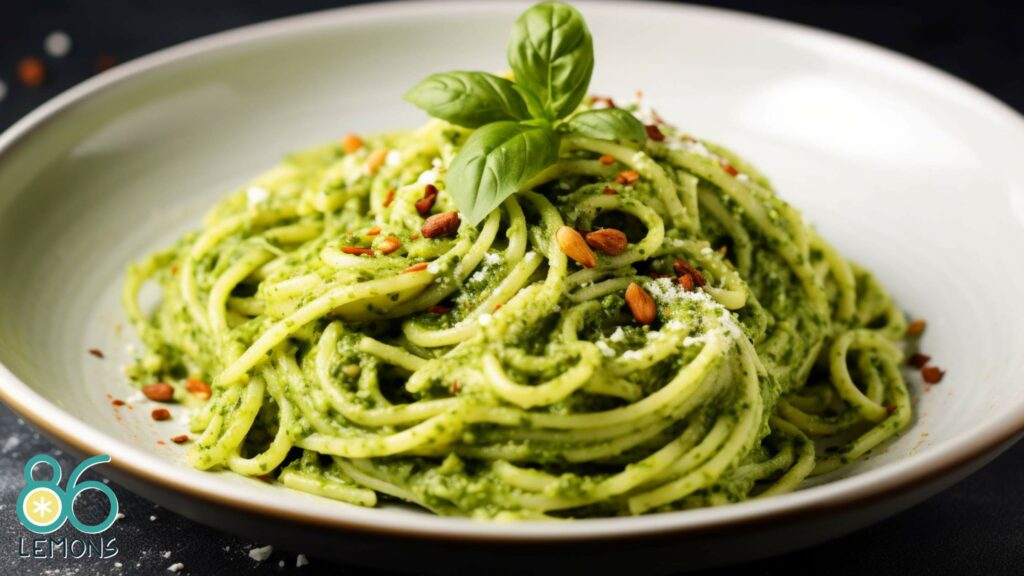Vegetarian pasta recipes have become a staple in many households looking to infuse their meals with various vegetables. Whether you’re a long-time vegetarian or just incorporating more meatless meals into your routine, veggie pasta dishes provide a delicious way to pack nutrients with robust flavors.
They offer the comfort of traditional pasta while elevating the dish with the textures and tastes of fresh produce. Exploring veggie pasta recipes opens up a world of culinary possibilities, from the simplicity of classic veggie spaghetti to the inventive twists of traditional favorites.
Personalizing your pasta with a choice of vegetables can turn an ordinary meal into a tailor-made feast. Veggie pasta noodles cater to your taste preferences and make creating colorful, balanced meals that support your health and well-being easy.
Key Takeaways
- Veggie pasta is a versatile and nutritious option for any meal.
- Customizing dishes with a variety of vegetables enhances both taste and health benefits.
- Creative presentation techniques can transform vegetarian pasta into visually appealing and delicious dishes.
Understanding Veggie Pasta
Switching to veggie pasta is a delicious way to get your servings of vegetables and enjoy a comforting meal. Here’s what you need to know to make your veggie pasta dishes stand out.
Benefits of Vegetarian Pasta
The shift to vegetarian pasta dishes can boost your health, with the added vegetables providing essential nutrients and fiber. Choosing whole wheat pasta or pasta made from legumes can offer increased protein and is generally considered healthier.
Choosing the Right Pasta Shapes
The texture and shape of your pasta can make a big difference. Spiral shapes like fusilli and rotini are great for holding onto chunky vegetable sauces.
At the same time, long ribbons such as fettuccine work well with lighter, oil-based sauces that feature ingredients like spinach leaves and sliced zucchini.
Essential Ingredients for Veggie Pasta
Start with olive oil, onions, and garlic to build a solid foundation for your veggie pasta. Essential vegetables include tomatoes, mushrooms, and kale, while yellow squash can add sweetness and texture.
For vegan choices, skip traditional cheeses and look for plant-based alternatives to ensure your dish remains vegan-friendly, like cashew cheese and its alternatives.
Flavorful Herbs and Spices
Don’t be shy with herbs and spices to elevate your pasta. Adding fresh basil, parsley, oregano, and basil leaves can introduce a burst of flavor.
To add a little heat, sprinkle in some red pepper flakes. These elements are key to creating a memorable, aromatic veggie pasta experience.
Popular Veggie Pasta Recipes
Dive into a world of flavors with these in-demand veggie pasta dishes. There’s a recipe here, whether you’re craving something creamy or looking for a dish to impress at your next potluck.
Classic Pasta Primavera
Your go-to dish for a colorful mix of vegetables, Pasta Primavera is quick, easy, and endlessly adaptable. Fresh veggies like bell peppers, broccoli, and carrots are sautéed and tossed with al dente pasta and a light sauce.
Hearty Mushroom Stroganoff
Imagine a bowl of Hearty Mushroom Stroganoff with rich, savory sauce clinging to every noodle. This vegetarian twist on a classic features earthy mushrooms and creamy sauce over a bed of your favorite pasta.
Creamy Vegan Fettuccine Alfredo
Creamy Vegan Fettuccine Alfredo changes everything you thought you knew about this classic dish. Cashews and nutritional yeast create a velvety sauce that’s both dairy-free and delightful, perfect for your fettuccine.
Baked Pasta Varieties
Take your pasta to the next level by baking it. Try a plant-based Baked Ziti or Baked Pasta Alla Norma with layers of roasted eggplant and marinara sauce blanketed with melty vegan cheese.
Refreshing Pasta Salads
Refreshing Pasta Salads are your best friend for warmer days or picnic lunches. Toss your noodles with an array of raw veggies, perhaps some creamy avocado, and a zingy dressing for a satisfying and light dish.
Creative Veggie Pasta Ideas
Dive into a world of mouth-watering meatless meals with these innovative veggie pasta creations that will tantalize your taste buds.
Stuffed Pasta Delights
Stuffed shells and manicotti take center stage in these recipes, offering a delectable vessel for a rainbow of vegetable fillings. Imagine biting into a shell filled with creamy spinach ricotta or a herby sauce, delivering both comfort and a serving of greens in each forkful.
Robust Tomato-Based Pastas
Transform your dish with a thick, zesty tomato pasta sauce. Classics like penne alla vodka get a veggie twist by infusing peppers and onions into the rich tomato base. Revel in the flavors of Italian cuisine with every spoonful.
Veggie Pasta with Legumes
Incorporate protein-packed beans into your pasta dishes for a hearty, nutritious meal. Whip up a classic Pasta e Fagioli, or explore a brothy pasta with chickpeas that marries simplicity with substance.
Innovative Cauliflower Bolognese
Replace traditional meat with finely chopped cauliflower for a cauliflower bolognese. This innovative dish delivers robust flavor, beautifully mimicking the texture of a meat sauce while staying fully plant-based.
Summer-Inspired Pasta Dishes
Summer squash and basil pasta or cherry tomato pasta can bring the essence of summer right onto your plate. These light yet satisfying recipes are perfect for longer days and warmer nights.
Kale-Powered Pasta
Last but not least, harness the nutritional powerhouse that is kale in a one-of-a-kind kale pesto pasta. This green twist on the classic cacio e pepe doesn’t just add color; it adds a punch of flavor and health benefits.
Customizing Your Veggie Pasta

Crafting the perfect veggie pasta dish is about personalization and experimenting with flavors that suit your tastes. Let’s dive into some tailored tips to help you create a pasta masterpiece in your kitchen.
Cooking Tips for Home Cooks
Selecting the right base is essential to ensure your veggie pasta stands out. Spaghetti sauce is a classic choice, but don’t be afraid to branch out. For instance, when making creamy pasta or vegan lasagna, consider textures and flavors that complement your chosen veggies.
Remember, cooking pasta al dente retains a slight chew that pairs well with crisp, sautéed vegetables.
Making Pasta Sauces from Scratch
Why not whip up a homemade pasta sauce with fresh ingredients from the shop? When creating a spaghetti sauce, start with a base of crushed tomatoes and add herbs like basil or oregano.
If you prefer a creamy pasta sensation, blend soaked cashews with nutritional yeast as a parmesan cheese alternative to achieve that beloved richness. Here are simple steps to guide you:
Adding a Personal Twist
Now, let’s talk about making that pasta dish distinctively yours. Try incorporating unexpected veggie combinations or spices that you love.
Some home cooks elevate their mac and cheese by adding roasted broccoli or spicy jalapeños. For a vegetarian lasagna, layer in roasted red peppers or artichokes for an extra zing. It’s your canvas, so don’t hesitate to get creative!
Health and Nutritional Aspects

When you’re eyeing some delicious vegetarian pasta recipes, it’s not just the flavor that should capture your attention. The health benefits, including calorie count and protein balance, are equally important.
Calorie Count and Nutritional Value
For vegetarian pasta dishes, calories can vary widely. A bowl focused on vegetables and whole-wheat pasta can be quite low in calories yet rich in nutrients.
For example, a recipe like pantry pasta with vegan cream sauce predominantly uses dried beans and pasta water, offering a good balance of protein, fiber, and essential vitamins without the heft of a traditional cream sauce. Key nutritional highlights include:
- Beans: High in fiber, low in fat, and a good source of protein.
- Whole Grains: Offer more fiber and nutrients than their refined counterparts.
- Vegetables: Add vitamins, minerals, and flavors while lowering the calorie count.
Balancing Protein in Vegetarian Pasta
A common challenge for vegetarian diets is ensuring you get enough protein. It’s easy to incorporate protein-rich ingredients like cheese and beans in pasta dishes.
Opting for a spaghetti recipe that includes these components, such as Kale and Pistachio Pesto Spaghetti, combines the indulgence of cheese with the protein power of nuts. Swap the cheese for nutritional yeast or parmesan substitutes to keep it vegan. Good sources of protein in pasta dishes might include:
- Beans: A versatile protein source that blends well with any pasta shape or sauce.
- Nutritional Yeast: Provides a cheesy flavor while being a complete protein.
- Nuts and Seeds: Add a crunchy texture and are packed with protein.
Sourcing and Shopping for Ingredients

Embarking on your veggie pasta journey starts with gathering vibrant veggies and top-notch pasta and cheese. You’ll want to hand-pick the freshest produce and select pasta and cheese to make your dish sing.
Finding Fresh Produce
When you’re hunting for vegetables to star in your pasta dish, start by looking for tomatoes that feel heavy for their size—a hint they’re juicy and ripe. For mushrooms, choose ones with a firm texture and a smooth appearance.
Zucchini should be bright in color and firm to the touch. Crisp spinach leaves indicate fresh, and a tightly closed cauliflower head suggests it’s at its peak. Remember to shop seasonally when you can; your local farmers’ market is a gold mine for fresh picks.
Selecting High-Quality Pasta and Cheese
Regarding pasta, aim for packages marked “al dente,” ensuring your noodles have the perfect chew. Whether you’re a fan of traditional, whole wheat, or gluten-free options, just ensure they’re not cracked or broken.
For cheese, Parmesan beckons with its nutty, salty flavor that elevates any pasta plate. If you opt for it pre-grated, look for “Parmigiano-Reggiano” on the label, a sign of authentic sourcing.
And for that lovely, stringy melt, seek out a block of high-quality mozzarella—you can grate or slice it yourself to add that gooey goodness to your veggie pasta masterpiece.
Serving and Presentation Tips
The right presentation can transform your veggie pasta from a simple meal to an impressive dish. With a few tips, you can plate your pasta like a seasoned chef and select sides that perfectly complement its flavors and textures.
Plating Pasta like a Pro
When you’re plating your veggie pasta, think about color and contrast. If your pasta is vibrant with greens from zucchini and reds from bell peppers, use a contrasting plate color like white or black to make those colors pop.
Twirl your spaghetti with a fork or spoon to give it height and elegance on the plate. Drizzle with a touch of olive oil for a glossy finish, and a sprinkle of fresh herbs like basil or parsley adds a fresh aroma and a professional touch.
Pairing with Side Dishes
Pair your pasta with side dishes with various textures and flavors. An Italian-style salad dressed with a light vinaigrette can cleanse the palate, while a side of garlic-infused roasted broccoli adds a satisfying crunch.
For a more substantial side, consider a slice of warm, crusty bread—perfect for sopping up any extra sauce. Remember, balance is key; your sides should complement the pasta, not compete with it.


